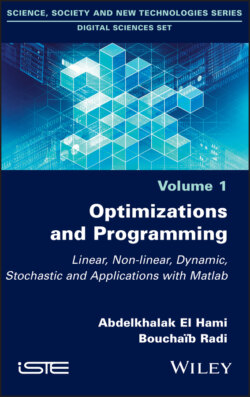Читать книгу Optimizations and Programming - Bouchaib Radi, Ghias Kharmanda, Michel Ledoux - Страница 12
1
Linear Programming 1.1. Introduction
ОглавлениеLinear programming can be defined as a mathematical technique for solving management problems. For example, suppose that a manager faced with various options wishes to determine the optimal way to use the resources of a company to achieve a specific objective, such as maximizing the utility or minimizing the cost. The company’s problems can usually be modeled as a linear program (LP) consisting of a certain number of resources [HIL 90]. For instance, the labor, raw materials and capital are all resources available in limited quantities that must be distributed optimally over various manufacturing processes. The approach to solving this type of problem is divided into two key steps:
– model the problem with linear equations or inequalities that allow us to properly identify and structure the constraints satisfied by the variables of the model. The contribution of each variable to the company’s overarching objective must also be defined as a function that will be optimized;
– find the mathematical optimum using specific linear programming techniques. We will study three methods for solving the various types of linear programming problems. The first is based on graphical solving and is therefore limited to two or three variables. The second method is more algebraic; it motivates the third method presented in this chapter, which is known as the simplex method (or algorithm).
